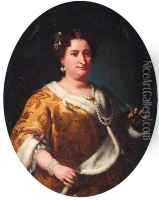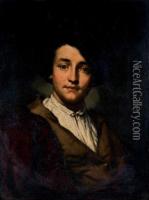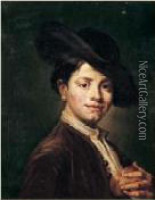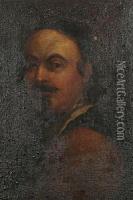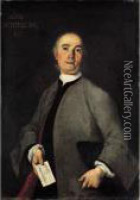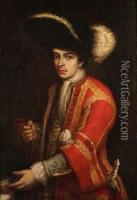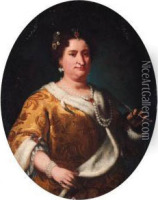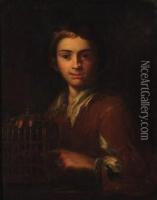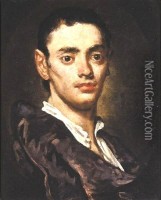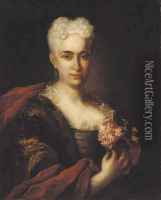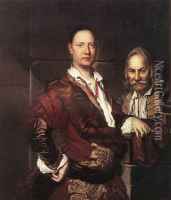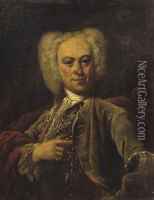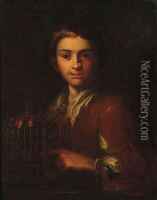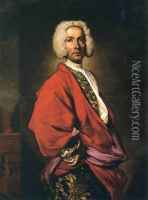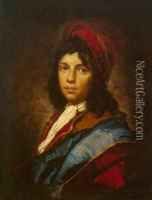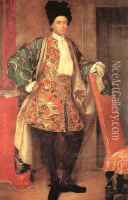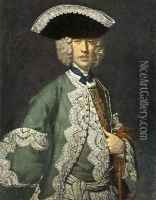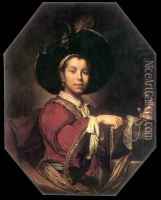Vittore Ghislandi Paintings
Vittore Ghislandi, also known as Fra Galgario, was an Italian painter born in 1655 in Bergamo, Lombardy. He began his artistic journey in a rather unorthodox fashion, initially joining the religious order of the Capuchin Friars, which earned him the moniker 'Fra' (Brother). However, his true calling lay in the arts, and he later left the order to pursue painting full-time.
Ghislandi trained under the guidance of eminent painter Carlo Ceresa and was greatly influenced by the Venetian masters of the time. His painting style was a unique blend of the rich Venetian color palette and the realistic depiction of details, which was a hallmark of the Lombard painting tradition. He was particularly renowned for his portraits, which were celebrated for their lively expressions and meticulous attention to the textures of fabrics and jewels, reflecting the opulence of the period. Ghislandi's subjects ranged from nobility and the bourgeoisie to the common folk, each portrait executed with a level of detail that brought out the individual character and status of the sitter.
Throughout his career, Ghislandi was active mainly in Bergamo and nearby areas, where he received numerous commissions. His works are characterized by their dynamic composition and the sophisticated use of light and shadow, features that have drawn comparisons with the works of the great Leandro Bassano.
Vittore Ghislandi's contributions to the world of art were significant in the transition from Baroque to Rococo styles in Northern Italy. His legacy is preserved in various Italian art galleries and collections, notably in his hometown of Bergamo. He passed away in 1743, leaving behind a body of work that continues to be appreciated for its elegance, realism, and vivid portrayal of 18th-century society.
